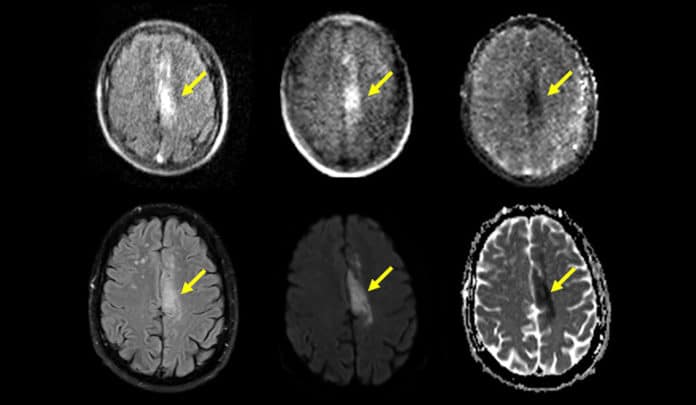Stroke is the second leading cause of death and a major cause of disability worldwide. Brain imaging is essential for confirming clinically suspected stroke, facilitating the implementation of acute treatment and secondary prevention pathways.
But access to stationary MRI machines is limited for those who live far away from major hospitals or in developing countries. And even stroke patients who have access to major hospitals often have to wait for scans with stationary MRIs because of heavy demand for the equipment.
Portable imaging devices, an emerging technology that makes medical imaging accessible even in remote locations, could be advantageous over conventional imaging approaches. They can be brought directly to the point of care and are less costly than stationary imaging units.
Now, new research has found that portable MRI machines can accurately detect ischemic strokes. The machine has detected ischemic strokes, or strokes caused by clotting, in 90% of patients scanned.
The ability of portable MRI machines to differentiate the two types of stroke – ischemic and hemorrhagic – will help clinicians make crucial life-saving treatment decisions quickly in remote areas for patients who lack ready access to major hospitals with expensive stationary MRI machines. Portable scans can be employed at a patient’s bedside, in ambulances, or at clinics in remote areas.
“This is the first systematic evidence you can detect ischemic strokes using portable, bedside devices,” said Kevin Sheth, a professor of neurology and neurosurgery at Yale School of Medicine and co-corresponding author of the study.
For their study, a collaboration between researchers at the Yale School of Medicine and Harvard University analyzed portable MRI scans from 50 patients at Yale-New Haven Hospital. Thye found that the results largely confirmed ischemic stroke diagnoses made by stationary MRIs. The machine was tested in a variety of emergency room and intensive care scenarios. For 45 of those patients, the portable MRI detected blood clots as small as 4 millimeters in size.
Researchers say the ease of use and low cost of pMRI position this novel imaging modality to address clinical bottlenecks and unmet imaging needs in resource-limited settings. Together, these results suggest that low-field pMRI can create imaging pathways that circumvent challenges and limitations associated with traditional stroke imaging approaches.
